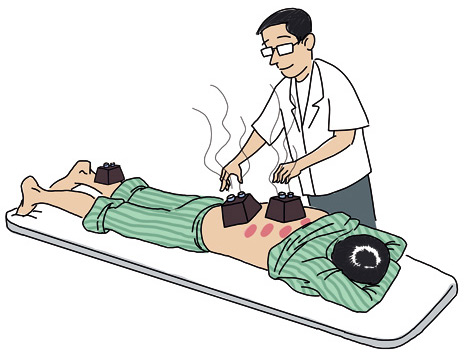
UNUSUAL, non-mainstream therapies from traditional Chinese medicine's bag of tricks are recognized and now are being taught. Zhang Qian investigates.
In martial arts there's often an unexpected master who produces an unlikely and obscure weapon just in the nick of time. That's not only true in kung fu but also in traditional Chinese medicine where little-known therapies have been developed outside the mainstream.
Herbal decoction, acupuncture, moxibustion, fire cupping and tuina (TCM massage) are well known in TCM and have developed over several thousand years. But there are lesser-known treatments that also have been tested and proved effective through years of clinical practice, often by folk practitioners. Some are recent.
A number of interesting therapies and innovations were demonstrated earlier this month at a forum sponsored by the Shanghai Shuguang Traditional Chinese Medicine Research and Development Foundation.
Sixteen TCM practitioners presented treatments that have been tested over time in private or personal practice and experts believe they should be preserved and handed down.
The practitioners included certified TCM doctors, Western doctors interested in TCM, self-trained practitioners, "barefoot doctors" who received minimal basic medical training long ago in rural areas, and former patients who became experts after long illness.
The presentations included ancestral antiseptic ointment for burns, diagnosis by checking the palm print, tiny herbal plasters replacing ear acupuncture needles, convenient moxibustion box and tools, and a therapy of pounding acupuncture points with a herbal stick after spreading a herbal liquor on the affected area.
"TCM is not an art invented in schools, but it originated from inherited and collected experiences through thousands of clinical practices in the everyday world," says Zhu Kangmei, the president of the sponsoring TCM foundation.
Many non-mainstream therapies and techniques are effective but the demand for formal training and certification prevents many practitioners from legally offering treatment. And the unpromising future of unconventional therapies has forced many apprentices to leave for other, more widely recognized training.
"This is a crucial moment for us. Many of the techniques are dying out because they are not being handed down. The remaining practitioners, the inheritors, are already quite old and have no apprentices," says Zhu.
"It would be a great pity if these techniques were lost this way."
To save the dying therapies, the foundation started to collect effective TCM techniques from the public in 2009. More than 100 applications were submitted from around the country and 60-70 were selected for their value and apparent reliability. These were examined and more research and testing is needed.
Thus far, six practices or treatments have been singled out by a TCM expert panel as having the most development potential. They are: a convenient moxibustion box; a therapy of pounding acupuncture points with an herbal stick to relieve pain; massage to relieve inflammation in women's breasts; acupuncture with electric current to relieve the pain of herniated lumbar discs; painless ear acupuncture with herbal plaster; and festering or direct moxibustion that creates an infected blister to intensify heat on acupuncture points.
The foundation plans to arrange training in these techniques by folk practitioners for young TCM students and interested doctors. The aim is to preserve the techniques and give students and doctors more practical experience.
We recommend:
